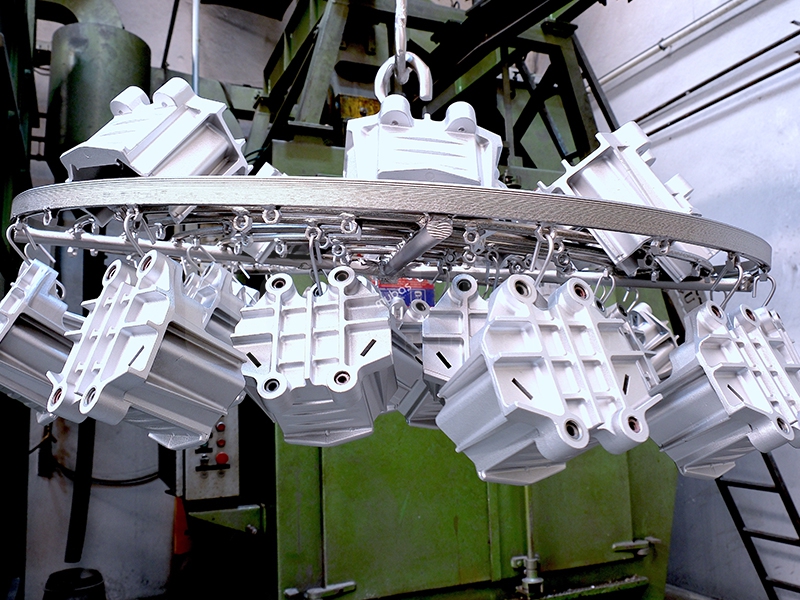Aluminum Injection Parts Surface Treatment
Surface treatment is a process used to improve the appearance, durability, and performance of aluminum injection parts. Some of the most common surface treatments for aluminum injection parts include:
Anodizing: Anodizing is a process that creates an oxide layer on the surface of the aluminum part. This oxide layer improves the durability and corrosion resistance of the part. Anodizing can also be used to change the color of the part.
Painting: Painting is a process that applies a coating of paint to the surface of the aluminum part. This coating improves the appearance of the part and can also provide additional protection against corrosion and other environmental factors.
Powder Coating: Powder coating is a process where a powder made of pigment and resin is electrostatically applied to a surface and then cured under heat to form a protective and decorative finish.
Electroplating: Electroplating is a process that applies a thin layer of metal to the surface of the aluminum part. This layer can improve the appearance and corrosion resistance of the part.
Passivation: Passivation is a process that removes surface contamination and forms a protective oxide layer on the surface of the aluminum part. This improves the corrosion resistance of the part.
Sandblasting: Sandblasting is a process that uses a high-pressure stream of abrasive particles to clean, smooth or roughen a surface.
Shot Peening: Shot Peening is a process that uses small spherical media to impact the surface of the part, creating a compressive residual stress layer that improves the fatigue strength and corrosion resistance of the part.
The choice of surface treatment will depend on the intended use of the aluminum injection part, as well as the desired appearance and performance properties. It is important to choose the right surface treatment for the specific application to ensure the best result.
